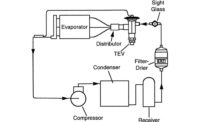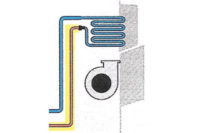In this troubleshooting situation, the customer is complaining that their comfort cooling system isn’t performing as it should. Their description of the problem is that the house always seems to be too “sticky”. They also say that the problem seems to be especially evident when the outdoor ambient reaches its highest level in mid-afternoon.
When you arrive, you get more information from the customer. As it turns out, you’re not the first one called in to service this 4-year-old equipment, which is a split system with the air handler in an attic crawl space. The repair history of this unit includes two service calls in which the refrigeration system pressures were checked and refrigerant was added in an effort to increase the cooling capacity of the system.
When you check the low side system pressure and suction line temperature of the system in order to perform superheat calculations and comparing the results to a manufacturer’s charging chart, you find that the system is overcharged. Based on the results of your refrigerant system evaluation, your next step is to evaluate the air flow system of the equipment, testing the dry bub and wet bulb temperatures of the air in the return air plenum as shown in Figure One.
When you compare the two measurements and relative humidity calculations, you find that there is an increase in the specific humidity.
Your troubleshooting question: What have you determined about the air handling system of this unit?
Compare your answer with ours HERE.
Publicaiton date: 2/5/2018
Want more HVAC industry news and information? Join The NEWS on Facebook, Twitter, and LinkedIn today!








